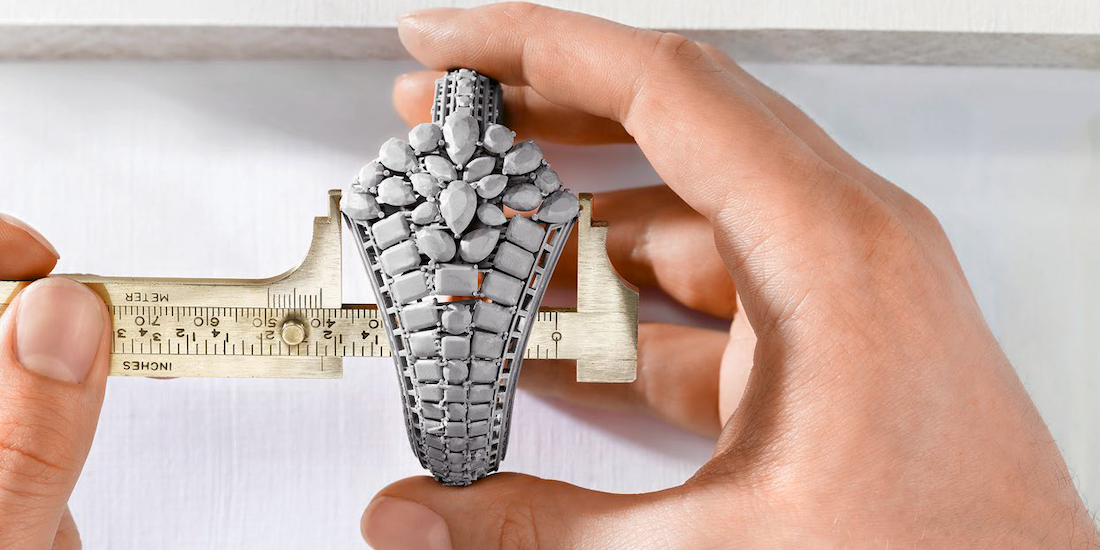
Tiffany & Co.’s new engagement ring marries modern radiance and mine-to-market transparency with a pledge that all newly-sourced diamonds at Tiffany’s are ethically mined.
For legions of starry-eyed lovers heading to the altar, Tiffany & Co. has been the ultimate destination for that universal symbol of love : the diamond-set engagement ring. From the first single diamond ring it designed in 1886 to the varied bridal collections it offers today, the storied American jeweler, founded in New York in 1837, has long associated true love with the radiance of an expertly cut and skillfully polished diamond.
This year, Tiffany’s has introduced the “Tiffany True,” a new diamond engagement ring that is poised to become a modern icon of the house. And not simply because it is the most radiant of the jeweler’s fancy-cut solitaires. Its most outstanding new feature is a pledge from Tiffany’s that its diamonds originate from ethically and environmentally responsible sources. “With the Tiffany True, complete with its unique setting and expert cut, we are introducing a supreme expression of modern love,” said Reed Krakoff, Tiffany’s chief artistic officer.
SOURCING TRANSPARENCY
While gazing into the store windows on Fifth Avenue, Holly Golightly said of Tiffany’s fantasy-inspiring boutique, “Nothing very bad could happen to you there.” But the world today is a very different place from that of Truman Capote’s Breakfast at Tiffany’s. “Very bad things” do happen in the complex and opaque supply chains of the global diamond trade which last year supplied the world with some 147 million carats of mined, rough diamonds. Still, modern-day Golightlys may rejoice in the knowledge that Tiffany’s has taken serious steps to ensure that any newly sourced, registered diamond purchased at any of its 300-some boutiques is certified as the product of sustainable mining and has journeyed down a verifiably ethical path from mine to market. “Sustainability lies at the heart of the Tiffany & Co. brand –it is both our legacy and our future,” said Alessandro Bogliolo,the company’s chief executive. “Tiffany’s promise to the world is to protect its beauty, nurture its people and conduct its businesswith care.”
“Tiffany’s promise to the world is to protect its beauty, nurture its people and conduct its business with care.”
“We now provide provenance information for every newly sourced, individually registered diamond we set, a significant step for diamond transparency,” said Anisa Kamadoli Costa, Tiffany’s chief sustainability officer, referring to the pledge to reveal “the country or region of origin for every newly-sourced diamond above 0.18 carat.” Tiffany’s commitment to sustainability is not new. For the past decade, the company’s annual “Sustainability Report” has tracked progress made in ensuring that its diamonds come from responsible mining. Tiffany’s stance in favor of sourcing transparency is somewhat of an exception in the diamond industry. According to Tiffany’s 2017 Sustainability Report, jewelry represented 91 percent of its worldwide net sales in 2017. The majority of its rough diamonds came from “known mines” in Botswana, Namibia, South Africa, Russia and Canada. Wholly-owned diamond-processing operations prepare, cut and polish the rough diamonds Tiffany purchases. Its vertically integrated facilities handle 60 percent of its jewelry manufacturing.
“We source the majority of our rough diamonds directly from mines or suppliers with a limited number of known mines,” Ms. Kamadoli Costa said. “These relationships help us to build a deeper understanding of the approach these mines take in addressing human rights, labor practices and the environment.”
CURBING CONFLICT DIAMONDS
Today, it is estimated that 65 percent of the world’s rough diamonds are mined in Africa where only about one fourth of mines are believed to be regulated. This results in large proportions of “unregulated” diamonds circulating in the international market. Tiffany’s actions are noteworthy also because global measures to prevent “conflict rough diamonds” from entering mainstream markets have had limited success. Growing consumer awareness of diamond mining’s negative environmental and the human impact is pushing the diamond industry to change its ways, and that is where Tiffany’s is leading the charge.
The company’s efforts have been noticed by global watchdogs like Human Rights Watch, which has since 2016 been challenging the industry to engage in responsible sourcing. “Tiffany’s has received a ‘strong’ ranking from Human Rights Watch for responsible sourcing of its diamonds and gold, becoming the only jeweler to earn this distinction,” Ms. Kamadoli Costa said. For the Golightlys dreaming of a Tiffany engagement ring, the diamond in that iconic blue box has never been greener.





